

Suunto Blog
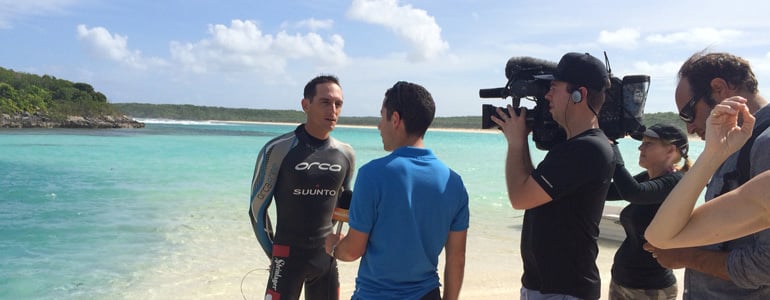
No new world record for Will Trubridge
The line between success and failure is a fine one – something the freediver Will Trubridge knows only too well. He has notched up 15 world records during his career. But yesterday, he did not manage to add another to his tally.
His attempt to reach 102 m in the completely unassisted discipline of CNF – where divers descend and ascend without fins or any other aids – was not successful. He reached his target depth but got into trouble near the surface and signalled for help to make the last few meters and was helped to the top by the safety divers.
Watch the epic video of his performance here:
Speaking afterwards Will said: “There's definitely disappointment about not reaching the goal I set myself. I prepared a lot for this dive and I feel like everything went well. In the freefall I was feeling good but just today, I just wasn't quite capable.
Though I'm disappointed not to achieve the goal, there is some content in the fact that I gave it my utmost best shot. And so much of my motivation to pull out all the stops in this attempt today came from the numerous messages of support that I have been receiving in the lead up.
I'm definitely going to attempt this again. This was just a plot twist. I will probably have another crack in the Spring.”
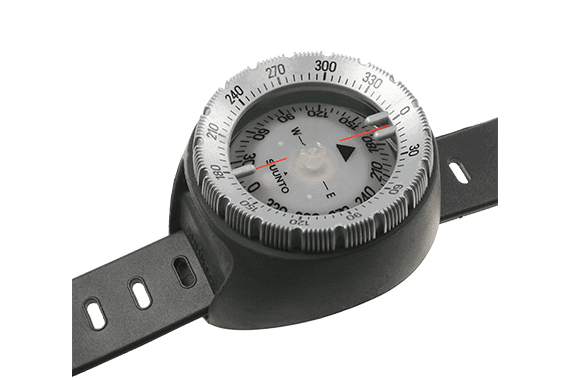
Suunto unveils a new dive compass
Suunto is releasing a new edition of the world's most popular dive compass, the Suunto SK-8.
SK-8, an update of Suunto’s leading dive compass, features new fonts for enhanced readability underwater and an improved construction for faster stabilization.
Both northern and southern hemisphere models can be used over a wider area of the globe thanks to an upgraded magnet – meaning you can have total confidence when following your dive plan.
The Suunto SK-8 is available from December 2014.
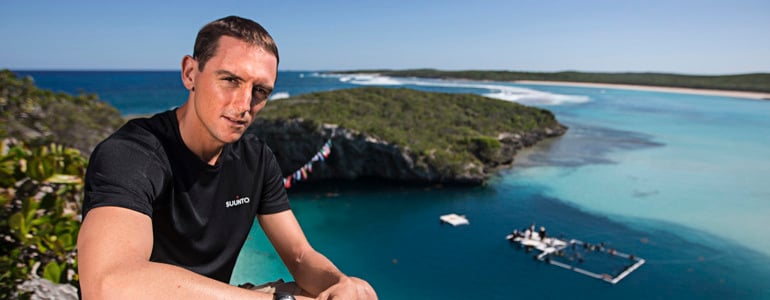
Trubridge attempts to break World Record
Today Suunto ambassador William Trubridge is going for the big record, the one he's been building up for – 102 m in Constant Weight No Fin (CNF), the purest freediving discipline. It's where divers descend and ascend without any artificial means. “Unassisted freediving is where you're freediving with no fins or any propulsive assistance of any kind and trying to go as deep as possible on that one lungful of air,” says Trubridge.If successful, it will break his own record of 101 m. The dive will last just over 4 minutes and will be split equally in time between descent and ascent. "I don't have a fear of being at depth or going to 100m, but I do have a fear of not making the dive perfect or being disqualified and essentially failing," adds Trubridge. This week he has made a couple of warm-up dives, one of which did not go to plan. Despite taking place in the Bahamas weather has been cool and Trubridge began his first big dive shivering from the cold which affected his performance. But before heading into the water today he was feeling confident. “I still feel that drive and thirst to go deeper. It hasn't been quenched yet,” he says. The dive will take place at 11 am EST. Stay tuned to Facebook to find out how it went.
Today was looking to be another action packed day at Suunto Vertical Blue with 11 other National Record announcements and an average depth of 79m!
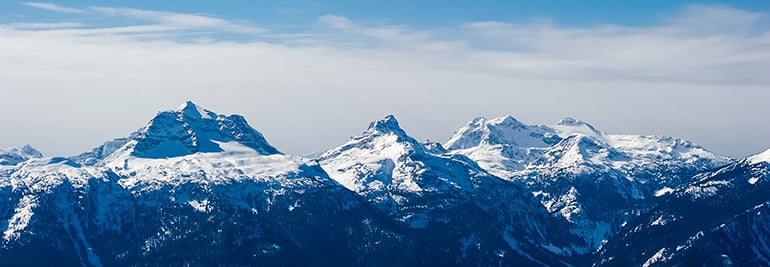
What's your adventure?
Adventures take us to new experiences and out of the everyday. Kilian Jornet says that exploring is human; Greg Hill that adventure is a mindset.
Watch the Suunto Adventure video and hear what Kilian Jornet, Greg Hill, Jill Heinerth and Conrad Stoltz think of adventure.
Top image: © Bruno Long
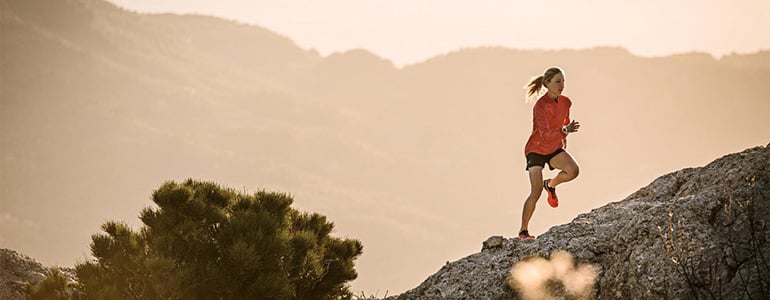
Meet the Ambit3 Sport Sapphire star Sandra Koblmüller
Sandra Koblmüller is the star of our recent Suunto Ambit3 Sport Sapphire shoot and you'll see her in the current campaign. But the 24-year-old is also an athlete in her own right and recently competed in the XTERRA world championships in Maui, the premier off-road triathlon, where she came 14th. Amazingly she only started swimming a few years ago. So how did she do it?
How did you get to become a pro triathlete? In secondary school our class took part in a cross-country running competition. Without any serious training I came second and my passion for running was born. I started to regularly take part in running competitions. When I went to university a colleague asked me to do the running part in a triathlon relay. I was so impressed from the combination of the three disciplines that I wanted to try a whole triathlon on my own and started to train for swimming. And then? One year later I won the Austrian Championship for Crosstriathlon and the Austrian federation sent me to the European Championships. Because of this, I was allowed to become a professional athlete this year. In my first year as a “pro“ I came second at the XTERRA Portugal, which qualifies you for the World Championship in Maui (Hawaii).
Tell us about your training routine?Normally I wake up at 6 o’clock in the morning. After a short breakfast I usually start my day in the swimming pool with a 3-5 km swim. I am not always motivated to jump into the cold water in the morning, but after some lanes I get my motivation and enjoy it.
After the swim I take a second breakfast and do something for university then at noon or in the evening I usually do my second workout – either I go for a run or I ride my bike. At the weekend I normally do some longer bike workouts (about 4 hours). Then Monday is my rest day, where I do relaxing things like sauna, massages, stretching…How do you monitor your progress? I have my own trainer and I usually get a training plan for a week. With the help of the Suunto Ambit3 Sport Sapphire we are able to control my training. Are there any areas of your training that you are struggling with?As I started stroke swimming very late at the age of 20, my swimming technique is not the best. If you want to be a good swimmer/triathlete you have to start swimming in your childhood to get the water feeling. However I’m working hard to improve this.
What are your dreams and goals?One of my biggest goals is to become one of the best XTERRA athletes in the world. A goal in the near future is a victory in one of the XTERRA World Tour races. What inspires and motivates you? One thing that inspires me is the improvement you make if you train hard for your goals. For example, when I started to swim, it took me about 1:45 for the 100 meters intervals (10 x 100m intervals of swimming). Now I am able to swim the 100m in 1:25 and I am sure that one day I will swim my 100m intervals under 1:20.What are your fears?I have a fear of failure, especially just before a competition. So the most important thing I have to learn is to believe in my strengths and myself.
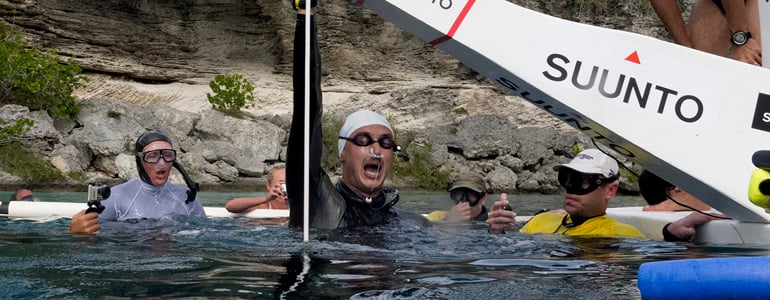
The deepest dive yet – and other Vertical Blue highlights from the weekend
Windy conditions at Deans Blue Hole didn’t prevent deep dives and exceptional performances during the weekend at Suunto Vertical Blue.
On Saturday the competitors broke three national records. Kate Middleton of New Zealand dove to 68 m (CWT), Alejandro Lemus of Mexico to 86 m (FIM) and Ryuzo Shinomiya of Japan to 60 m (CNF).
In this Day 3 highlights clip you can check out an interview with Mexico's Estrella Navarro Holm of Mexico and other highlights from the third day of competition including a new CNF record from Ryuzo Shinomiya of Japan.
Meanwhile in this clip you can watch highlights from day two of #VB2014, including interviews with Kate Middleton of New Zealand, Lena Jovanovic of Serbia and scenes from Deans Blue Hole.
Main image: ©Rebecca Woodmore














































































